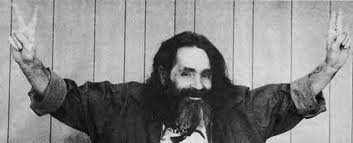
On the west side of this, and only this, tree

On the west side of this, and only this, tree

So here’s my theory for the arc of the season. A few years ago, I watched Monterey Pop and Woodstock within a couple of days of each other. I was struck by the differences in Hippie Nation between the two, the events in both occurring a little over two years apart. I’ma gonna throw around some cliches here, but Monterey was all sunshine, flowers and patchouli (with the notable exception of the chaotic antics of the Who). Woodstock is a descent into mud and madness – the gate crashing, overdosing, bad trips belying the communal ideas which groups like the Diggers and others were trying to uphold. Just the change in Hendrix is instructive. At Monterey, he’s a revelation, blowing apart R&B and “folk” rock with only his guitar and two other guys. Of course, he does set his axe on fire at the end, having to do something to upstage the Who. At Woodstock, he’s a diminished figure, the toll of his drug use and the weight of the expectations on him visible in his every gesture. Even though the sun is coming up as he plays, he’s well on his way to death and will arrive there in just a little while. At Monterey, Joplin storms the stage, takes the crowd by the throat and tears out a piece of her heart to inextricably bond herself to the crowd. She was still just a girl from a small town in Texas at that point. By the time Woodstock rolled around, she had become JANIS!, Just like Hendrix, the pressures she was experiencing, and the ways in which she dealt with those pressures, were ripping her to shreds. That arbiter of hippiedom, Abbie Hoffman, tried to storm the stage at Woodstock during the Who’s set, only to be dissuaded from delivering his screed by Townshend’s axe. Hippie nation was beginning to turn on itself and letting itself be destroyed, trying to put a flower in the gun barrel in front of them while failing to notice all the OTHER guns pointed its way, including some pointed from within. Pop will eat itself, indeed.
The book in the 33 1/3 series on Forever Changes by Andrew Hultkrans is what led me to start reevaluating the 60s and having a more jaundiced eye. Prior to reading that, I was blinded by my own naivete and willfully failing to see that Manson and the events at Altamont were as much of a result of the 60s as was flower power. Neil Young was never particularly hippie dippy. By the mid 70s he seems to have soured on the era he came out of. Revolution Blues, on On the Beach, is a scathing indictment of the idea that if only we can move away, live amongst only the like-minded and develop our own culture and morality, utopias will spontaneously emerge. The needle came, the damage was done, and flower power began to rot and stink, as will all beautiful things if they aren’t properly watered and cared for.
Back to Mad Men. I didn’t realize until this week how apropos the first word in the title is, in terms of insanity. Bob Benson, with his self-help honed interpersonal skills, is THE creepiest character they have ever had on the series. Creepier than Pete at his smarmiest, creepier than the fat Jaguar guy, more disturbing than Betty at her worst. He’s the Manson – mark my words – there is a reckoning coming this season, or maybe next. It will make the lawnmower incident and Lane’s suicide look like phantasms cooked up in a creative meeting. I just hope Joan, Kevin and Joan’s mom survive it. Part of me hopes I’m wrong, but the entire series is a mirror or macrocosm of its times, and I don’t think Weiner will avoid addressing the darker aspects.

Punk, photography, drugs, dissolution and the Maine coast? What’s not to like? I started this a few years ago and finally finished it a couple of months ago. Truthfully, I think the reason I put it down in the first place was that I didn’t care how the mystery was resolved, who the culprit was. It was pretty obvious anyway. The ideas behind the book are what fascinated me, and seeing from another review on here that part of it is likely autobiographical makes me want to hug the author and hang out with her.
I love outsider art, so called, and in a way the art created by the commune in the novel is the ultimate example of that. It’s so creepy, but at the same time familiar and understandable to me. Going off the rails, and the grid, and moving to a remote area with your compadres, creating a way of living and a society that allows you to indulge your impulses is attractive to me. It’s a cool idea, in theory, but the incestuousness, not necessarily in a literal way, of living like this can give rise to some weirdness that isn’t exactly the good kind. When your only frame of reference is yourself, and those like you, and you intentionally limit your contacts with the “outside” world in order to more purely refine the art of your life and of your work, the corruption can arise and consume you without your knowing it.
Patti Smith came to mind a number of times while I was reading this. Easter is my favorite album of hers, another example of the magic that can occur with a lot of third albums. There’s the first album, frequently work which has been developed and honed over years. The second contractually obligated album which is often a rush job, the band or artist being pushed by execs to get something out fast to capitalize (literally!) on the success of the first. The third is often more of a consistent artistic statement, its artistry combining the magical spark of the first album with artistic integrity hard won in the struggles with the suits.
This digression was brought to mind by the song Rock and Roll Nigger on Easter. In Generation Loss, outside of society is where they wanted to go, and so they did. As happened with a lot of the communes formed in the 60s, this society ate itself in a way. All the beautiful idealistic dreams last for a while, at least until the internal pressures which develop when you are so strenuously trying to exclude the “corrupting” influences of the outside world cause the fantasy to decay, or explode, or both. Nothing can exist and be healthy in isolation. It’s just the way the world works. The gleam becomes tarnished, and furious attempts to desperately shine it up again and return it to its former lustrousness result, tragically, in totally erasing the glow and showing the unvarnished truth. The truth of the situation can’t be handled, and subsequently disillusionment, dissolution and decay result. Utopias can’t exist in the real world, but as hopeful (and frequently somewhat delusional) humans we keep making our futile and vain attempts to create them. Hope does indeed spring eternal, but in order to taste the pure source, first we have to remove all the rotting leaves that will eventually sour the water. Sometimes we even have to allow outside sources of which we might be suspicious to enter and wash away some of the dreck. This can be threatening at first but ultimately, if one is open to it, will be seen as of benefit. It is important for the artist to guard his core integrity and make sure it is only enhanced, not tainted at its source, by the fresh input. Only through this process can he continue to create works which will astonish and delight both him and his audience.
I discovered GP in 1978 with the release of Stick to Me. Went back to Howling Wind and Heat Treatment and fell in love. At the time, I thought Elvis Costello (particularly with the Attractions) could not be surpassed. Such a fanboy that I went to Spencer’s and got them to make a shirt, with iron-on letters ELVIS COSTELLO on the front and MY AIM IS TRUE on the back (now that I think of it, all three of the EC shirts I have owned have interesting histories. There was the Spencer’s one, one I got at a 1980 concert in Chapel Hill – they weren’t selling shirts so I paid one of the ushers ten bucks for hers – she went into the bathroom, changed and gave it to me – too small but I wore that fucker anyway, and one I got in ’92 or so from a fan club I belonged to – a bitmapped reproduction of the This Year’s Model cover pose).
Didn’t know squat about pub rock at the time, had no idea that my producing idol Nick Lowe had been one of the founding members of Brinsley Schwarz, or that the swinging, hard edged folk of My Aim is True had grown out of it. EC left that sound resolutely behind when he went on to do This Year’s Model and Armed Forces (a trilogy of first three albums that will lick any other motherfuckers in the house). After that, there was the unfortunate Ray Charles incident, dating Bebe Buell and other shenanigans that had a negative influence on his artistic genius. The drinking and drugs didn’t help either. He did attain genius again with Imperial Bedroom, then after descended into something closely resembling mediocrity, failing to stay true to himself and hewing too closely to the trends of the time with Goodbye Cruel World and Punch the Clock. True, there are some gems on those two albums, among them The Comedians (which Roy Orbison did better) and Shipbuilding, one of my favorite elegiac antiwar songs. His career since has been erratic, flashes of the former glories interspersed with misguided forays into genres and styles which have been embarrassing at times.
But this was supposed to be, or started out as, a piece on Graham Parker. HIS first three can lick any other motherfuckers, pretty much, of that era. Not as artistically adventurous as EC’s first three but just as good. The fury of punk influences Stick to Me, and the swinging sounds of pub rock and R&B make Howling Wind and Heat Treatment instantly familiar yet sui generis at the same time. You wanna hear some shitkicking rock and roll? Seek out the Live at Marble Arch EP. He puts the ENTIRE Jackson 5 in an airplane spin and slams them to the mat with his cover of I Want You Back. Much, much, much better than the Parkerilla live album. I give him the benefit of the doubt on that one and chalk it up to his struggles with his label at the time, Mercury (you want acidic? Listen to Mercury Poisoning, his withering biting of the hand which was feeding him at the time). They wanted a live album, since an artist at that stage of his career was SUPPOSED to release one and besides, there were those niggling contractual obligations to fulfil.
He finally made his escape from Mercury, went to Arista and recorded Squeezing Out Sparks, one of the best albums of the 80s, right up there with London Calling. There were missteps along the way, The Up Escalator among them with its turgid production by Jimmy Iovine, one of the hot hands of the day after his work with Patti Smith and Bruce Springsteen, among many others. Springsteen even makes a token appearance on Up the Escalator, contributing his trademarked “uh-uhh-uhhhhh” style to Endless Night. I love Springsteen – loved him a lot more at the time – but he does become a caricature of himself at times.
It was a strange time – major labels were beginning to flail around and making sometimes laughable attempts to retain credibility and relevance under the assaults from labels like Stiff and Sire (Sire owned by a major, true, but managing to release albums of quality and integrity which still stand up under the test of time). GP kept chugging along, releasing stuff like The Real Macaw (has some high spots), The Mona Lisa’s Sister (which I love, his cover of Cupid giving me a sense of his sweetness I hadn’t glimpsed before) and some other spotty output.
I catch up with GP once every few years it seems, he pops up in unexpected places. Went through a Bloodshot phase, and dang, there’s old Graham with an album on that label! I lose track of him again, and there he is popping up again a few years later, FINALLY getting some recognition in pop culture at large, nearly forty years after his debut, thanks to Judd Apatow, of all people. Hopefully making some money too. He has gone through his career underrated, underestimated, a prophet without honor, of sorts. Cheers to Graham Parker, one of the best songwriters of the past forty years. As is mentioned in the article, he belongs in the Rock and Roll Hall of Fame, not that it really matters and it isn’t as if he, or I, really give a fat rat’s ass either way.
Working on a longer post about this marvelous work. Has an album, or any other work of art, combined edifying, horrific and genuine like this one? I’m not sure.